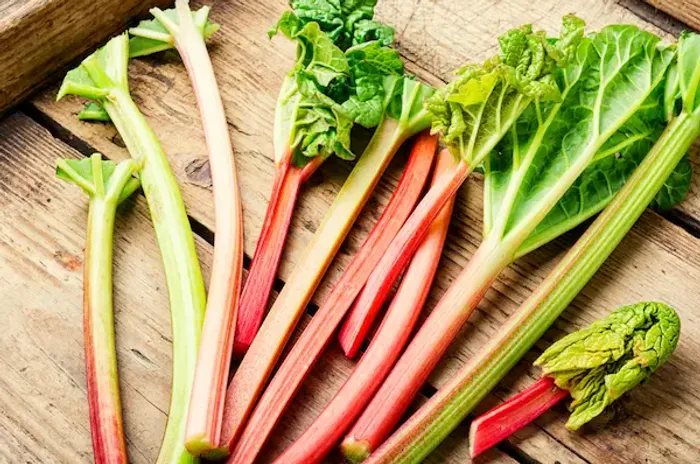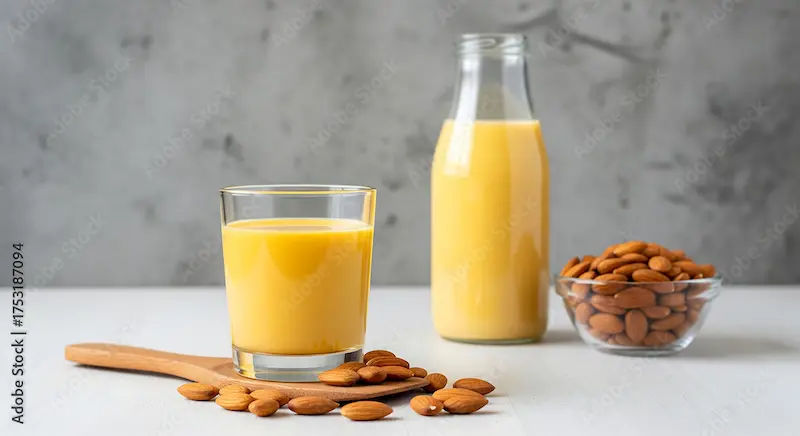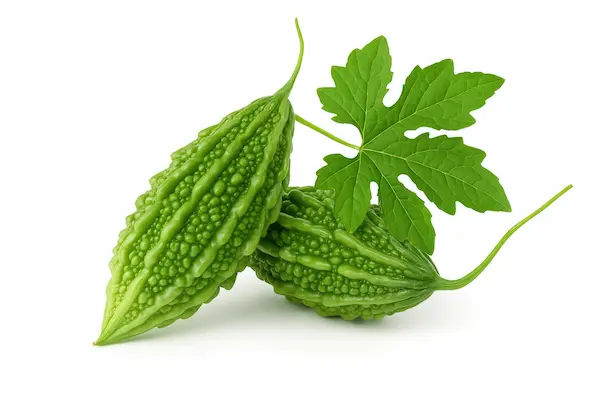Rhubarb in Ayurveda: Benefits, Uses, and Side Effects
Discover rhubarb benefits in Ayurveda. Learn how this ayurvedic herb is used, who should avoid it, and key side effects. Safe, evidence-based guidance.

Written by Dr. M L Ezhilarasan
Reviewed by Dr. Dhankecha Mayank Dineshbhai MBBS
Last updated on 21st Nov, 2025

Introduction
Curious about rhubarb benefits and how this ayurvedic herb is used? Rhubarb has a long history in traditional medicine for digestive support, especially as a short-term laxative. Today, people also enjoy rhubarb stalks as a tart, fiber-containing food. But it’s important to know the difference between culinary rhubarb and medicinal rhubarb, what evidence supports its uses, and how to avoid side effects.
This guide explains what rhubarb is, how Ayurveda and modern sources view it, the potential benefits and risks, and practical safety tips you can use right away.
What is rhubarb?
- The plant: Rhubarb is a group of related species in the genus Rheum. Stalks from culinary rhubarb (often Rheum rhabarbarum) are cooked and eaten in foods.
- The medicine: Traditional herbal medicine usually uses the dried root and rhizome from species such as Rheum palmatum or related types, sometimes called “medicinal rhubarb.” These roots contain compounds that act as stimulant laxatives.
- Key safety note: Rhubarb leaves are poisonous and should never be eaten. They contain high levels of oxalic acid and other compounds that can cause serious illness.
Rhubarb in Ayurveda: the traditional context
In Ayurveda, rhubarb root has been used traditionally in small, carefully guided amounts to support digestion and bowel movements. As with many strong-acting herbs, classical use emphasizes short-term, targeted support rather than daily, long-term use. Modern, evidence-based sources agree that the herb’s main supported medical use is for short-term relief of constipation, owing to natural stimulant-laxative compounds in the root.
Culinary rhubarb versus medicinal rhubarb
- Culinary rhubarb (stalks): A tart vegetable usually cooked with fruit or a small amount of sugar. It offers fiber and can fit into a balanced diet. Leaves are not edible.
- Medicinal rhubarb (root): A potent laxative used in traditional systems and some modern herbal formulas. It is not the same as eating rhubarb pie or stewed rhubarb.
Consult a Top General Physician
Evidence-based rhubarb benefits and uses
The most consistent, well-documented use of medicinal rhubarb root is as a short-term stimulant laxative for occasional constipation.
How does it work?
- The root contains anthraquinone derivatives (such as emodin and rhein). These compounds stimulate the colon and increase intestinal movement, helping produce a bowel movement.
What does this mean for you?
- Occasional constipation: Short-term use of rhubarb root preparations may help relieve occasional constipation. Because it is a stimulant laxative, it should not be used daily or for extended periods without medical guidance.
What we don’t know yet?
- Other claimed benefits (for example, effects on cholesterol, metabolism, or inflammation) are not well established in high-quality human studies. If you’re seeking these outcomes, talk with your clinician about safer, better-studied options.
Potential side effects and risks
Like all stimulant laxatives, medicinal rhubarb can cause side effects—especially with higher doses or longer use.
Common side effects
- Abdominal cramping
- Diarrhea or loose stools
- Nausea
Possible risks with frequent or long-term use
- Electrolyte imbalance (such as low potassium), which can lead to weakness, heart rhythm problems, or increased sensitivity to certain medications
- Dehydration
- Worsening constipation when overused (the bowel can become reliant on stimulant laxatives)
- Urine discoloration (harmless and temporary in some cases)
Serious safety alerts
- Leaves are toxic: Rhubarb leaves should never be eaten. They can cause poisoning due to high oxalate and other compounds.
- Kidney stone concerns: Rhubarb is high in oxalate. People prone to calcium oxalate kidney stones should be cautious about high-oxalate foods, which include rhubarb.
- Digestive diseases: Do not use stimulant laxatives like rhubarb if you have intestinal obstruction, inflammatory bowel disease flare-ups, appendicitis, or unexplained abdominal pain.
Who should avoid this ayurvedic herb?
- Pregnant or breastfeeding people: Avoid medicinal rhubarb unless a qualified clinician recommends it. Safety data are limited, and stimulant laxatives may not be appropriate.
- Children: Avoid rhubarb root in children unless specifically advised by a pediatric clinician.
- People with kidney stones or high risk for stones: Limit high-oxalate foods (such as rhubarb) and get personalized guidance from your clinician.
- People with heart rhythm problems or taking medicines affected by potassium levels (for example, certain diuretics or digoxin): Stimulant laxatives can lower potassium and increase risks.
Medication interactions to know
Because medicinal rhubarb can act like other stimulant laxatives, it may interact with:
- Digoxin and other cardiac glycosides: Low potassium from laxative overuse can increase toxicity risk.
- Diuretics or corticosteroids: These can also lower potassium; combined use raises the chance of electrolyte imbalance.
- Antiarrhythmic medications: Low potassium increases risks of abnormal heart rhythms.
- Other oral medicines: Faster intestinal transit can reduce absorption. Take other medications at a different time from stimulant laxatives to avoid reduced effectiveness.
If you take any prescription medications or have medical conditions, talk with a healthcare professional before using rhubarb root.
How to use rhubarb safely? (practical tips)
Choose the right form:
- Culinary use: Eat only the stalks. Always discard the leaves.
- Medicinal use: Root preparations (capsules, powders, teas) are potent. Use the lowest effective amount for the shortest time, with professional guidance.
Keep use short-term:
- For occasional constipation only. Do not use stimulant laxatives daily or for longer than a week without medical advice.
Start low and go slow:
- Begin with a small amount to see how you respond. Stop if you develop cramping, diarrhea, or weakness.
Hydrate and add fiber:
- Drink water and eat fiber-rich foods (vegetables, beans, whole grains) to support regularity without relying on stimulant laxatives.
Buy quality products:
- Choose supplements tested by independent quality programs when possible (for example, USP Verified or NSF Certified) to reduce the risk of contamination or mislabeling.
Culinary rhubarb: safe ways to enjoy
- Always remove and discard leaves.
- Cook the stalks (they are very tart when raw). Combine with berries or apples, or stew them with a small amount of sweetener.
- Moderation matters for people who form calcium oxalate kidney stones. If you’re at risk, speak with your clinician or a dietitian about oxalate management and calcium timing with meals.
When to see a healthcare professional?
- Constipation lasting more than a week despite home measures
- Severe abdominal pain, vomiting, blood in stool, or unexplained weight loss
- Signs of dehydration or weakness
- If you are pregnant, breastfeeding, have kidney stones, heart disease, inflammatory bowel disease, or take medicines that affect heart rhythm or potassium levels
Simple, lifestyle-first steps for regularity
Before turning to stimulant laxatives like rhubarb, many people do well with:
- Hydration: Aim for regular fluid intake throughout the day.
- Fiber: Gradually increase fiber to 25–38 grams daily (from foods like beans, oats, fruits, vegetables, nuts).
- Movement: Daily physical activity helps bowel motility.
- Routine: Regular meal times and bathroom habits support natural rhythms.
Rhubarb benefits in Ayurveda: the bottom line
As an ayurvedic herb traditionally used for digestion, rhubarb root’s best-supported modern use is short-term relief of occasional constipation. Respect its potency, avoid the toxic leaves, and use it briefly and carefully—especially if you take other medicines or have medical conditions. For day-to-day gut health, prioritize fiber, hydration, and movement, and speak with your clinician before using any herbal laxative.
Consult a Top General Physician
Consult a Top General Physician

Dr. Rajib Ghose
General Physician/ Internal Medicine Specialist
25 Years • MBBS
East Midnapore
VIVEKANANDA SEBA SADAN, East Midnapore
Dr. Naziya Rahim Bhatia
General Surgeon
7 Years • MBBS ,MS
Bengaluru
Apollo Clinic, Sarjapur Road, Bengaluru

Dr. Tapabrata Ray
General Physician/ Internal Medicine Specialist
4 Years • MBBS,DGM,CPMeC,ACMDC
Kolkata
MCR SUPER SPECIALITY POLY CLINIC & PATHOLOGY, Kolkata

Dr. Sougata Kumar
General Practitioner
8 Years • MBBS
East Midnapore
VIVEKANANDA SEBA SADAN, East Midnapore

Dr. Uddalak Chakraborty
Neurologist
8 Years • MBBS,MD(GENL. MED.),DM(NEUROLOGY)
Kolkata
VDC Clinic, Kolkata
Consult a Top General Physician

Dr. Rajib Ghose
General Physician/ Internal Medicine Specialist
25 Years • MBBS
East Midnapore
VIVEKANANDA SEBA SADAN, East Midnapore
Dr. Naziya Rahim Bhatia
General Surgeon
7 Years • MBBS ,MS
Bengaluru
Apollo Clinic, Sarjapur Road, Bengaluru

Dr. Tapabrata Ray
General Physician/ Internal Medicine Specialist
4 Years • MBBS,DGM,CPMeC,ACMDC
Kolkata
MCR SUPER SPECIALITY POLY CLINIC & PATHOLOGY, Kolkata

Dr. Sougata Kumar
General Practitioner
8 Years • MBBS
East Midnapore
VIVEKANANDA SEBA SADAN, East Midnapore

Dr. Uddalak Chakraborty
Neurologist
8 Years • MBBS,MD(GENL. MED.),DM(NEUROLOGY)
Kolkata
VDC Clinic, Kolkata
More articles from General Medical Consultation
Frequently Asked Questions
Are rhubarb leaves poisonous?
Yes. Rhubarb leaves are toxic and should never be eaten. They contain high levels of oxalic acid and other compounds that can cause serious illness. Only the stalks are edible, and the medicinal root is used in herbal products.
Can rhubarb help with constipation?
Medicinal rhubarb root contains natural stimulant-laxative compounds that can help relieve occasional constipation. Use the lowest effective amount for the shortest time. Do not use daily or long term without medical guidance.
Is rhubarb safe in pregnancy or while breastfeeding?
Avoid medicinal rhubarb during pregnancy and breastfeeding unless a qualified clinician recommends it. Safety data are limited, and stimulant laxatives may not be appropriate. Discuss safer options for constipation with your obstetric care team.
Can rhubarb cause kidney stones?
Rhubarb is high in oxalate, which can contribute to calcium oxalate kidney stones in susceptible people. If you have a history of stones or are at risk, ask your clinician or dietitian about how to manage oxalate in your diet.
What’s the difference between culinary rhubarb and medicinal rhubarb?
Culinary rhubarb refers to the stalks you cook and eat; they’re tart and provide fiber. Medicinal rhubarb refers to the dried root used in herbal formulas as a stimulant laxative. The leaves of any rhubarb plant are not edible and are poisonous.




